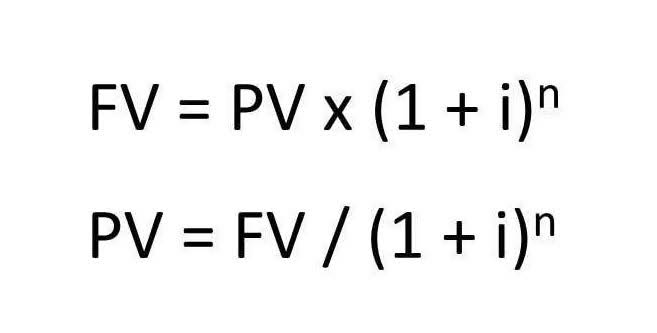
CFI is the global institution behind the financial modeling and valuation analyst FMVA® Designation. CFI is on a mission to enable anyone to be a great financial analyst and have a great career path. In order to help you advance your career, CFI has compiled many resources to assist you along the path. Retained earnings and profits are related concepts, but they’re not exactly the same.
- This means that retained earnings typically increase with credits and decrease with debits.
- For example, at the end of a fiscal year, an entry might debit the income summary account and credit retained earnings to reflect the transfer of net income to retained earnings.
- Thus, the balance in Retained Earnings represents the corporation’s accumulated net income not distributed to stockholders.
- For instance, if a company pays one share as a dividend for each share held by the investors, the price per share will be cut in half because the number of shares will double.
- Retained earnings appear under the shareholder’s equity section on the liability side of the balance sheet, and often companies will show this as a separate line item.
- When the retained earnings balance is less than zero, it is referred to as an accumulated deficit.
Retained Earnings: Everything You Need to Know for Your Small Business
The issue of bonus shares, even if funded out of retained earnings, will in most jurisdictions not be treated as a dividend distribution and not taxed in the hands of the shareholder. Company A’s ending retained earnings are $650,000, indicating that it has reinvested profits back into the business. Profits generally refer to the money a company earns after subtracting all costs and expenses from its total revenues.

Are Retained Earnings Part of Equity?
Negative retained earnings, known as an accumulated deficit, indicate that a company has incurred more losses than profits over time. At the end of an accounting year, the balances in a corporation’s revenue, gain, expense, and loss accounts are used to compute the year’s net income. When the year’s revenues and gains exceed the expenses and losses, the corporation will have a positive net income which causes the balance in the trial balance Retained Earnings account to increase.

How do companies use Retained Earnings?
- Dividends are paid out of retained earnings of the company, and using both cash and stock dividends can lead to a decrease in the retained earnings of the company.
- Retained earnings are calculated by subtracting dividends from the sum total of the retained earnings balance at the beginning of an accounting period and the net profit or loss from that accounting period.
- Retained earnings are prominently featured in a company’s financial statements, serving as a bridge between the income statement and the balance sheet.
- However, the amount of the retained earnings balance could be relatively low even for a financially healthy company, since dividends are paid out from this account.
For established companies, a balanced approach between retained earnings and dividends Cash Flow Management for Small Businesses can indicate a well-managed strategy to keep investors happy while fueling growth. In the case of the yearly income statement and balance sheet, the net profit, as calculated for the current accounting period, would increase the balance of retained earnings. Similarly, if your company incurs a net loss in the current accounting period, it would reduce the balance of retained earnings.
Revenue vs. net profit vs. retained earnings
This means that retained earnings typically increase with credits and decrease with debits. A positive credit balance indicates accumulated profits, while a negative balance may suggest accumulated losses or deficits. A balance sheet with retained earnings shows the financial position of a company at a specific point in time. Retained earnings are listed under shareholders’ equity, reflecting the company’s accumulated profits. This section of the balance sheet is critical for understanding the financial stability and growth potential of the business.

Step 3: Explain the Impact on Stockholders’ Equity
The main difference between retained earnings and profits is that retained earnings subtract dividend payments from a company’s profit, whereas profits do not. Where profits may indicate that a company has a positive net income, retained earnings may show that a company has a net loss, depending on the amount of dividends it paid out to shareholders. Moreover, the impact of dividends on retained earnings is not just a matter of financial arithmetic; it also affects investor perception and market valuation. A company that consistently pays dividends might be viewed as reliable and financially sound, attracting income-focused investors. On the other hand, a firm that retains most of its earnings might appeal to growth-oriented investors who are more interested in capital appreciation than immediate returns. This dynamic can influence stock prices and overall market sentiment, further underscoring the importance of dividend policies in corporate strategy.

- The offsetting credit is most likely a credit to cash because the reduction of a liability means that the debt is being paid and cash is an outflow.
- Contra-expense accounts, such as Purchases Discounts and Purchases Returns and Allowances, also have a credit balance that allows the company to report both the gross and net amounts.
- Retained earnings represents the portion of a company’s net income that is reinvested in the business rather than distributed to shareholders as dividends.
- Meaning the retained earnings balance as of December 31, 2022 would be the beginning period retained earnings for the year 2023.
- For example, a debit to the accounts payable account in the balance sheet indicates a reduction of a liability.
- However, a debit balance in Retained Earnings is relatively rare and typically indicates financial distress.
Credit balances typically represent liabilities, such as loans, credit card balances, does retained earnings have a credit balance or accounts payable. When a payment is made towards a liability, the credit balance decreases, while a debit entry increases the balance. On the other hand, assets, equity, and income accounts usually have debit balances, which are recorded on the left side of a T-account. Accounts with credit balances provide insight into a business’s financial position. Liability accounts, such as loans, bonds payable, and deferred tax liabilities, represent debts and commitments a company must fulfill. Equity accounts, including contributed capital like common and preferred stock, and retained earnings, highlight the ownership structure and financial strength of a business.
